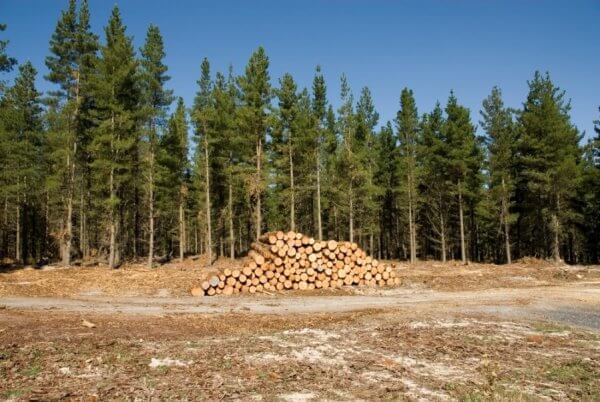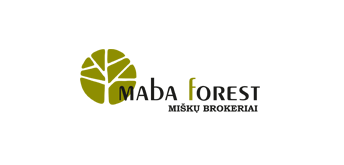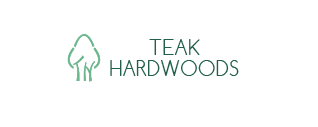Investing in European Forests for yield and capital growth.
Maba forest is a turn key forestry service provider, Gintaras Montrimavičius it’s managing director explained to InvestItIn.com the services they offer and why investing in Lithuania forestry can provide a stable yield and long-term capital gains.
About MABA Forest
MABA Forest is a Swedish Capital company focused on forestry successfully operating in Lithuania since 1993. We are responsible for helping our clients to invest in forest land in Lithuania, to determine the exact market value of the forest, to analyse the return on investment in the forest over a 20 year period. We also provide consulting and other services.
Furthermore, our team is providing help to look after the acquired forest land by performing all the necessary forest maintenance work (plantings, thinnings, etc.) and negotiating with the sawmills. The company is leaning towards the Scandinavian model of forestry office which consists not only of foresters but also investing specialists and a lawyers.
What are the most common trees in Lithuanian forest?
Lithuanian forests are mostly dominated with conifers.
- spruce 20,9 %
- pines 35,0 %
- Birch 22,3 %
- black alder – 7,3 %
- grey alder – 6,1 %
- aspen 4,1 %
- oak – 2,1 %
- ash – 1,2 %
- others – 1,1 %
Do you have any graphs of the price per hectare evolution in the last few years?
According to our observation and analysis, for the last few years Lithuanian forest land prices tend to grow 5 percent every year and these prices are expected to grow steadily in the next 3 years. Currently, the price of empty forest land, where birch or spruce replants naturally, starts from 400 Eur per hectare.
What determines the prices of a forest?
The price depends on the type, quantity and quality of timber growing in the forest as well as the quality of forest land and, of course, the location.
Lithuanian forests have the highest productivity rate of land compared to other Baltic and Scandinavian states as well as the best volume increment of timber, according to Lithuanian State Forest Agency, an average of 6,2 cubic meters per hectare volume increment per year. Actually, the productivity rate of Lithuanian agro and forest land is nearly the same, but the prices differ twice as much.
As a result of good quality land, forest trees might grow up to 30 meters in height. Thus, forests produce an incredibly large amount of timber; the average is 240 cubic meters per one hectare (data base of Lithuanian State Forest Agency). When it comes to other states, Latvian and Estonian timber volume is slightly smaller and reaches 189-203 cubic meters per hectare, while Scandinavian states on average grow only 120 cubic meters per hectare.
Despite these facts, Lithuanian forest land prices are still the lowest amongst the Baltic states.
What products/streams of income can be created from Lithuanian forests?
After the selling of the round wood felled in his forest, the investor usually gets back 70 percent of the invested sum. Lithuania has a well-developed sawmill industry so at least ten sawmills in every region are willing to buy locally felled timber with is later introduced to Lithuanian and foreign markets. Birch veneer is widely used in the furniture industry. Market demand for the production of softwood remains stable throughout the years and is even growing rapidly. It is very easy to sell timber in Lithuanian market.
Is the latitude important in the price of the forest?
The forest prices in Lithuania do not depend on the latitude.
What are the main advantages for investors to own a forest in Lithuania?
The main advantages of investing in Lithuanian forest land are unreasonably low forest land prices, large supply of forest land for sale and the highest productivity rate of land compared to other Baltic and Scandinavian states as well as the best volume increment of timber. Another advantage regarding Lithuanian forest acquisition is the European Union support which can be provided until the year of 2020 for a wide range of activities, such as new forest afforestation, young forest thinning, modernization of forest equipment, reconstruction of forest roads, etc.
What are the key risks that investors should be aware of when investing in Lithuanian forests?
Two main risks are the related to timber thefts and natural disasters.
Timber thefts and illegal fellings are getting rarer these days as official raids are being carried by State Forestry Agency.
Private forest land owners also have many abilities to prevent thefts by entering into an agreement with private forestry companies, like us, who are looking after the forests by checking it constantly, collaborating with neighbouring forest owners and State

Forestry Agency officials. For instance, during the year of 2016, there were stolen only 2700 cubic meters out of total 8 million cubic meters Lithuanian timber, and these numbers are decreasing 10 percent every year.
Natural disasters like storms, windfalls and fires are also very rare, usually only takes place in the west of Lithuania and do not effect young and well-groomed forests. There
are also many preventional means and innovations to avoid damage such empty lines of land that prevent fire from spreading, proper thinning which helps to avoid losses during the windfalls. However, if the damage could not be avoided, forest land owners are entitled to get support from the European Union to retrieve losses.
How big does a forest need to be to be economically / commercially viable?
As the experience of our client’s shows, successful investment usually begins at buying at least 10 hectares of forest land. Although the investment starts with smaller forest land plots, once they were sure about the forecasted returns, each of our investors expanded their investments to much bigger properties. The bigger investment is, the more fellings can be performed, which allow to get stable income periodically.
What is the most efficient way to buy a forest is it as a company or as an individual?
It depends on the investment strategy. If the forest is not requiring any management actions to be taken, for instance, felling, thinning or afforestation, it more cost-effective to acquire it as an individual. However, to save up the taxes while carrying out any economical activity in the forest, establishment company is more beneficial.
Are there any rules that prohibit logging in Lithuania and would these be in the purchase contract? Is it possible that such laws change the status of a forest?
There might be restrictions on logging some forests belonging to recreational and nature reserve forest groups. All the rules and restrictions are covered in Felling Rules of the Republic of Lithuania while the certain group of the forest is always defined in the documents before signing the purchase contract. The status of such forests cannot be changed.
What is the purchase process is it an auction or is it a direct discussion between buyer and seller?
Private forest are usually acquired through the negotiations between the buyer and the seller. However, there were amendments made to the Forest Act of Republic of Lithuania, which now allow the owners of the neighbouring forest land plots to get the priority right of acquisition. After the waiver, anyone can acquire the negotiated forest land plot.
In order to purchase a forest does an investor need to be physically in Lithuania?
Yes. The forest land evaluation and negotiation with the seller can be carried out by the mediator, but the sell-purchase contract must be notarised with both parties present.

What are the challenges to owning a forest with a hands-off approach?
There are no considerable challenges as the vast majority of people own a forest land plots in different regions all across the Lithuania and it is impossible to manage all the lands by themselves. It is a common practice to hire a forestry company, like MABA FOREST, who manages and takes care of the forest.
What’s an investor buys a forest is there a professional turn-key solution to manage everything from timber harvesting, replanting, forest fees and taxes, income tax and company accounts management?
The best solution is to hire a professional who will take care of the forest land, the company and negotiation process with the seller. MABA Forest services consist of finding a forest land plot for a successful investment, taking care of the purchase process, long-term consulting on forestry and investment strategy, estimating the return on the investment in the period of 20 years and management of the forest. Professional forest engineers will supervise the felling and other forestry processes, arrange sale of the timber for the reliable sawmills for the best prices in the market. Our lawyer is willing to help with legal issues, company set-up and management, book-keeping, draft all the necessary documents and consult on real estate, tax and forestry related questions.
What is the cost of such turnkey services?
1-2% from current plot price.
What are the annual fees to maintain the legal entity (company) that
owns the forest?
Company administration expenses depend on the amount of work but the regular fee is 1400 Eur per year.
Do such turnkey services provide a planning of the forest , for example,
the thinning schedule?
Yes. Such services include everything from planning, preparing projects and other needed documentation, getting permissions, supervising during the process of felling and selling the timber.
What are the current prices spruce, birch and pine?
The average prices are as follows:
- Spruce – 62 Eur per cubic metre
- Birch – 70 Eur per cubic metre
- Pine – 55 Eur per cubic metre.
More information on http://195.182.70.69/incoming/www/Informacija/Parduotu_med_sort/pard_med_sort_2016-12.pdf
On average what is the yield of timber per hectare?
According to Lithuanian State Forest Agency, an average of 6,2 cubic meters per hectare volume increment per year.
What is the main business lesson you have learnt in your career?
When you see the opportunity, you must take actions instantly. The best time to invest into forest is now.
To learn more about Maba Forest visit their website : http://www.mabaforest.com/
We thank Gintaras Montrimavičius for the interview.










